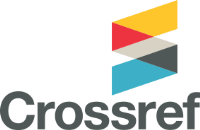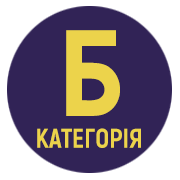THE IMPLEMENTATION OF AI IN UKRAINIAN FOOTBALL: CHALLENGES, PROSPECTS, AND ANALYTICS
DOI:
https://doi.org/10.32782/ped-uzhnu/2025-9-25Keywords:
football, sports analytics, artificial intelligence, game theory, adaptive models, digital technologies in sportsAbstract
The article explores the prospects of applying artificial intelligence tools in football analytics, particularly within the Ukrainian sports context during wartime. The current state of football analytics development worldwide is analyzed, with an emphasis on statistical learning methods, computer vision, and game theory. While analytical approaches are widely used in leading football nations, Ukrainian football has only recently begun its digital transformation, hindered by technical, organizational, and social barriers. Special attention is given to the challenges posed by martial law: infrastructure destruction, staff outflow, limited technical resources, internet instability, and data storage issues. The potential of deep and reinforcement learning, multi-agent systems, and neural network approaches for building adaptive real-time models is discussed. The article substantiates the relevance of creating open Ukrainian football datasets to unify research efforts and facilitate the localization of global expertise. Further research directions are proposed: implementation of adaptive AI models, analysis of youth and amateur matches using computer vision, and investigation of ethical aspects of AI use in sports. The materials may be useful for sports analysts, coaches, club managers, and researchers working at the intersection of physical education, digital technologies, programming, and mathematical modeling. Special emphasis is placed on the importance of training specialists capable of working with big data in the sports environment. The need for interdisciplinary educational programs combining analytics, sports, computer science, and cognitive sciences is emphasized to develop a new generation of professionals capable of effectively implementing innovations in football during both peacetime and postwar recovery.
References
Гончарова Н. М., Головач І. І., Гацко О. В. Сучасні цифрові інструменти у процесі відбору футболістів. Академічні візії (Випуск 40). Zenodo. 2025. DOI: https://doi.org/10.5281/zenodo.15170730
Baumer B. S., Zimbalist A. S. The Sabermetric Revolution: Assessing the Growth of Analytics in Baseball. University of Pennsylvania Press. 2014.
Beal C., Norman T. J., Ramchurn S. D. Artificial intelligence for team sports: A survey. IEEE Transactions on Artificial Intelligence, 1 (1). 2019. 1–14.
Carreira J., Zisserman A. Quo vadis, action recognition? A new model and the kinetics dataset. In Proceedings of the IEEE Conference on Computer Vision and Pattern Recognition (CVPR). 2017. Рp. 6299–6308.
Chen D., Kim J., Mooney R. J. Training a multilingual sportscaster: Using perceptual context to learn language. Journal of Artificial Intelligence Research, 37, 2010. 397–435.
CVSports. Computer Vision in Sports Workshop. 2020. URL: https://cvsports.eecs.qmul.ac.uk
Decroos T., Davis J. Interpretable player representations via restricted Boltzmann machines. In Proceedings of the 13th MIT Sloan Sports Analytics Conference. 2019.
Deng J., Dong W., Socher R., Li L.-J., Li K., Fei-Fei L. ImageNet: A large-scale hierarchical image database. In IEEE Conference on Computer Vision and Pattern Recognition, 2009. Рp. 248–255.
Fernandez-Navarro F., et al. A new approach for team performance analysis in soccer: The weighted centroid. International Journal of Performance Analysis in Sport, 16 (2), 2016. 553–567.
Franks A., Miller A., Bornn L., Goldsberry K. Characterizing the spatial structure of defensive skill in professional basketball. The Annals of Applied Statistics, 9 (1), 2015. 94–121.
Kuper S., Szymanski S. Soccernomics (3rd ed.). Nation Books. 2018.
Giancola S., Amine M., Dghaily T., Ghanem B. SoccerNet: A scalable dataset for action spotting in soccer videos. In Proceedings of the IEEE/CVF Conference on Computer Vision and Pattern Recognition Workshops. 2018.
Godard C., Mac Aodha O., Brostow G. J. Unsupervised monocular depth estimation with left-right consistency. In CVPR 2017.
Liu P., Schulte O. Deep reinforcement learning in ice hockey for context-aware player evaluation. In Proceedings of the 27th International Joint Conference on Artificial Intelligence (IJCAI). 2018. Рp. 3442–3448.
Liu P., et al. Learning soccer analytics from spatio-temporal data. In Proceedings of the 2020 AAAI Conference on Artificial Intelligence.
Long J., Shelhamer E., Darrell T. Fully convolutional networks for semantic segmentation. In Proceedings of the IEEE Conference on Computer Vision and Pattern Recognition. 2015. Рp. 3431–3440.
Alp Güler R., Neverova N., Kokkinos I. DensePose: Dense human pose estimation in the wild. In Proceedings of the IEEE/CVF Conference on Computer Vision and Pattern Recognition. 2018. pp. 7297–7306.








